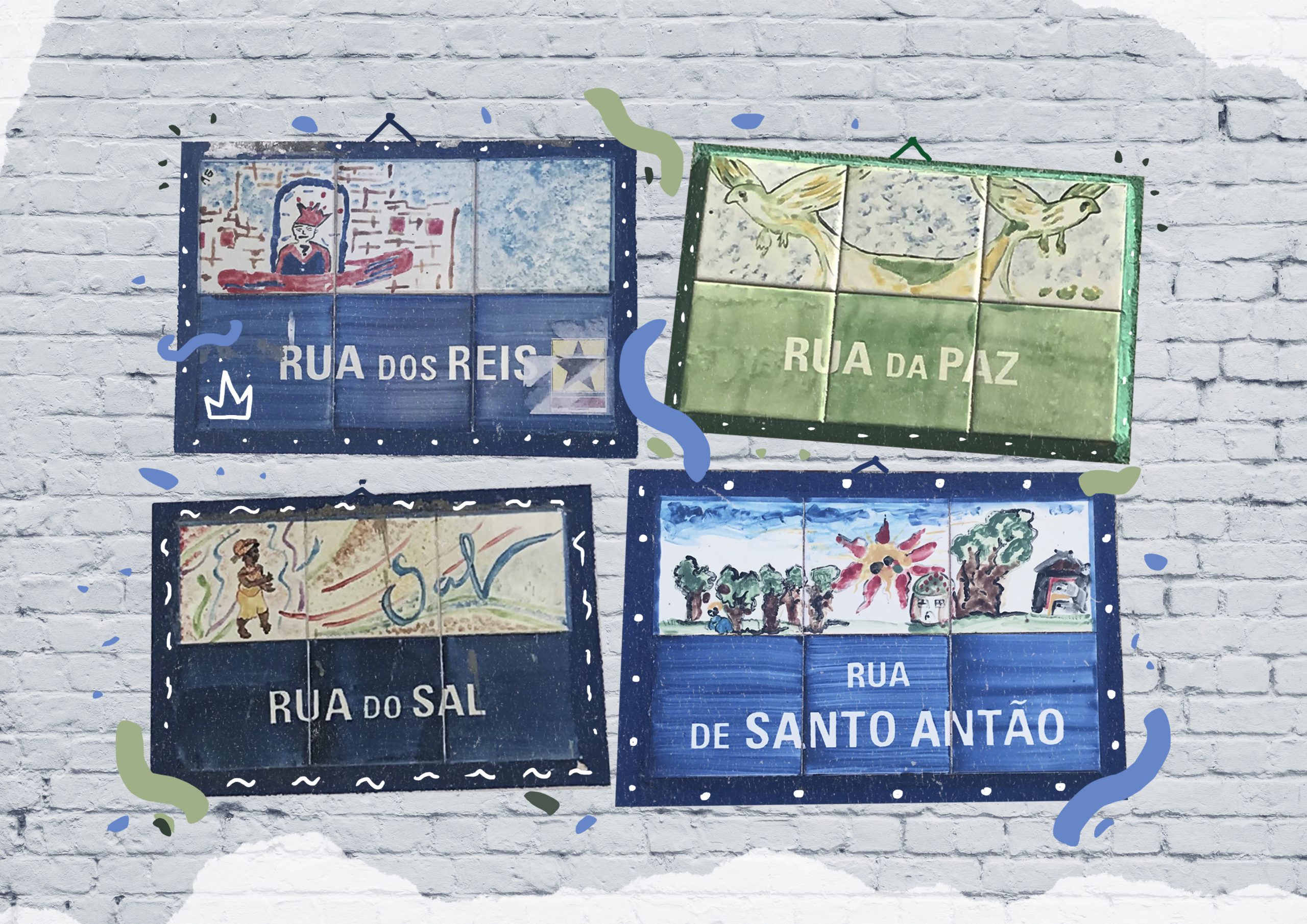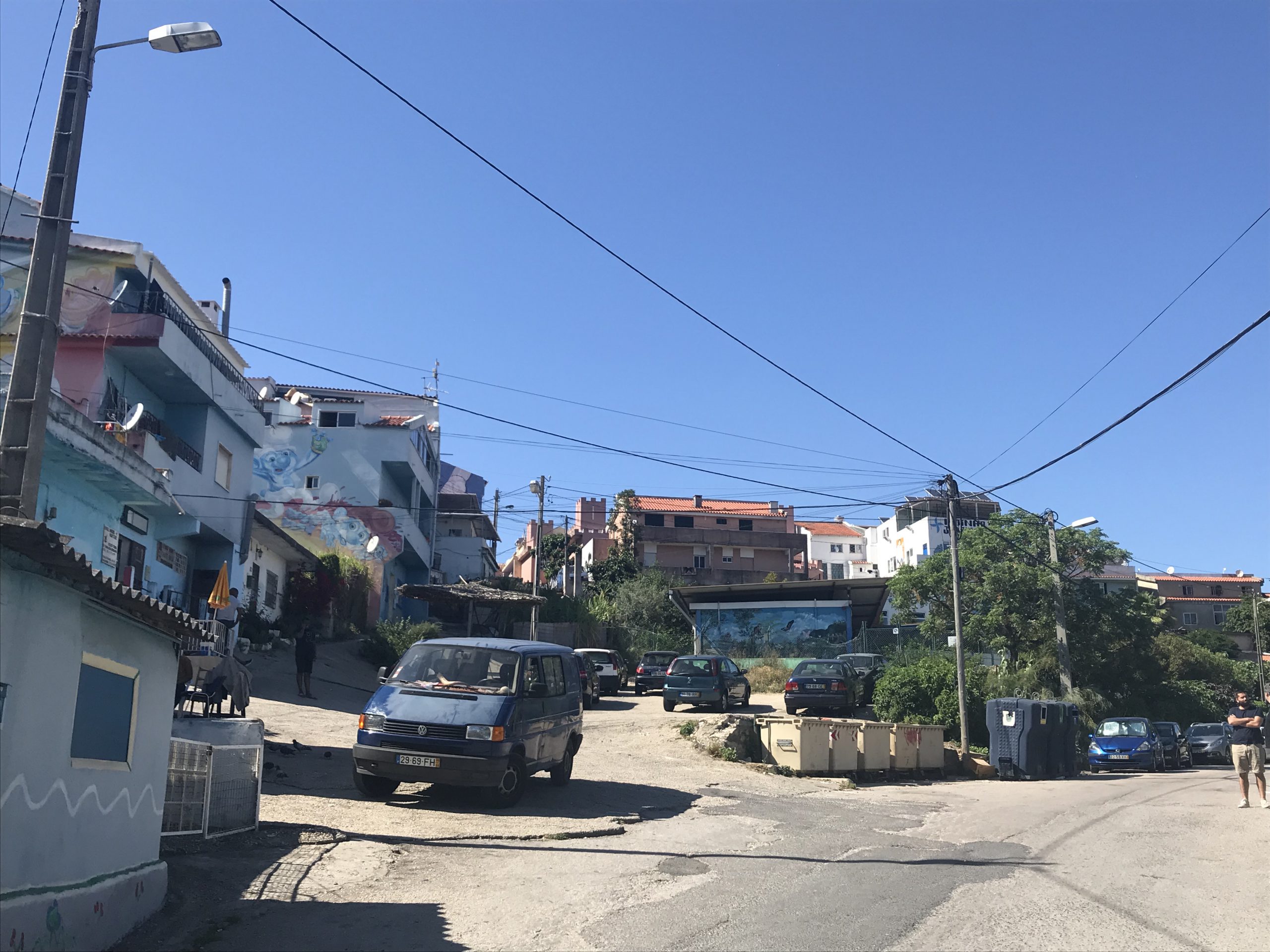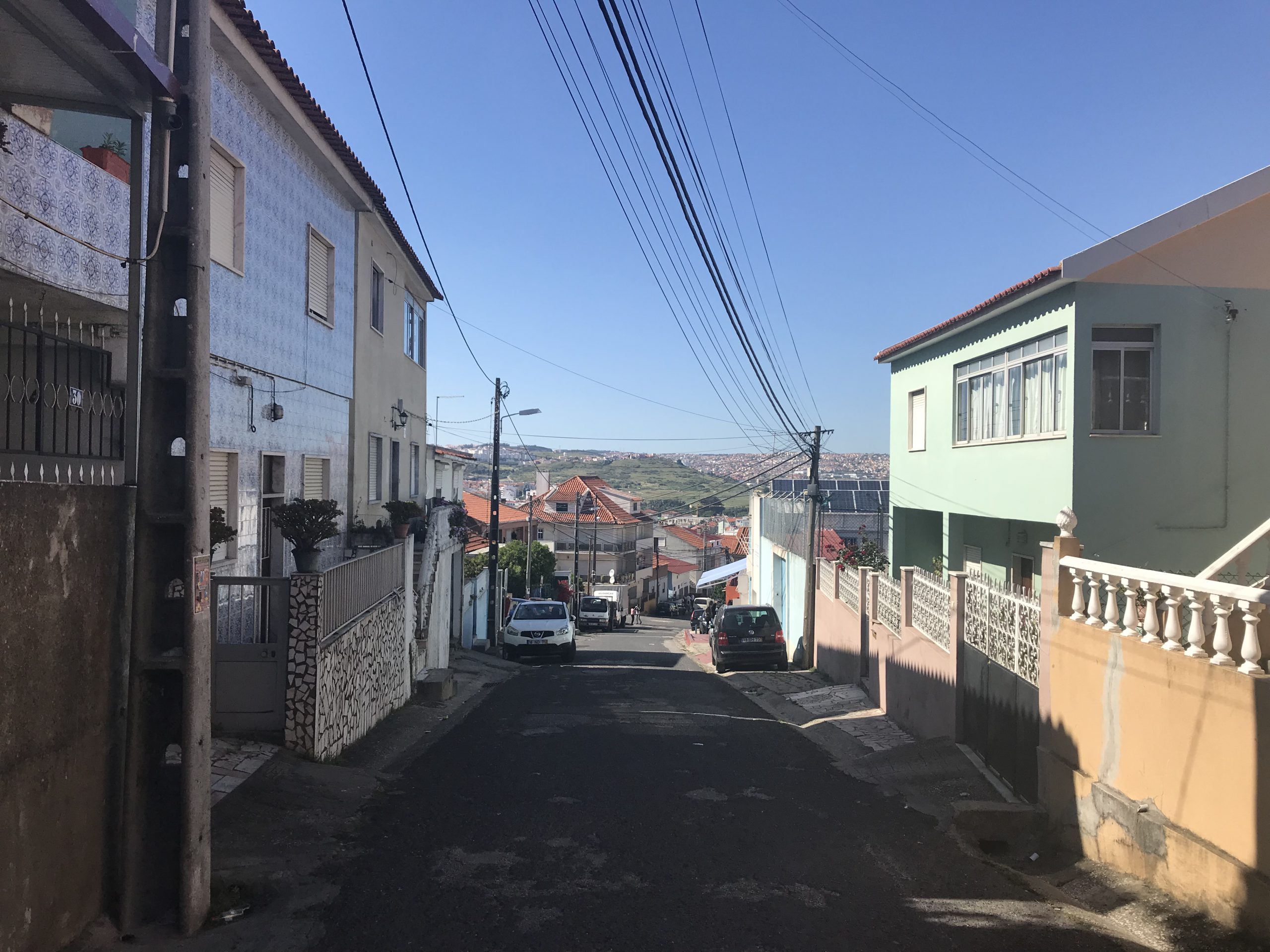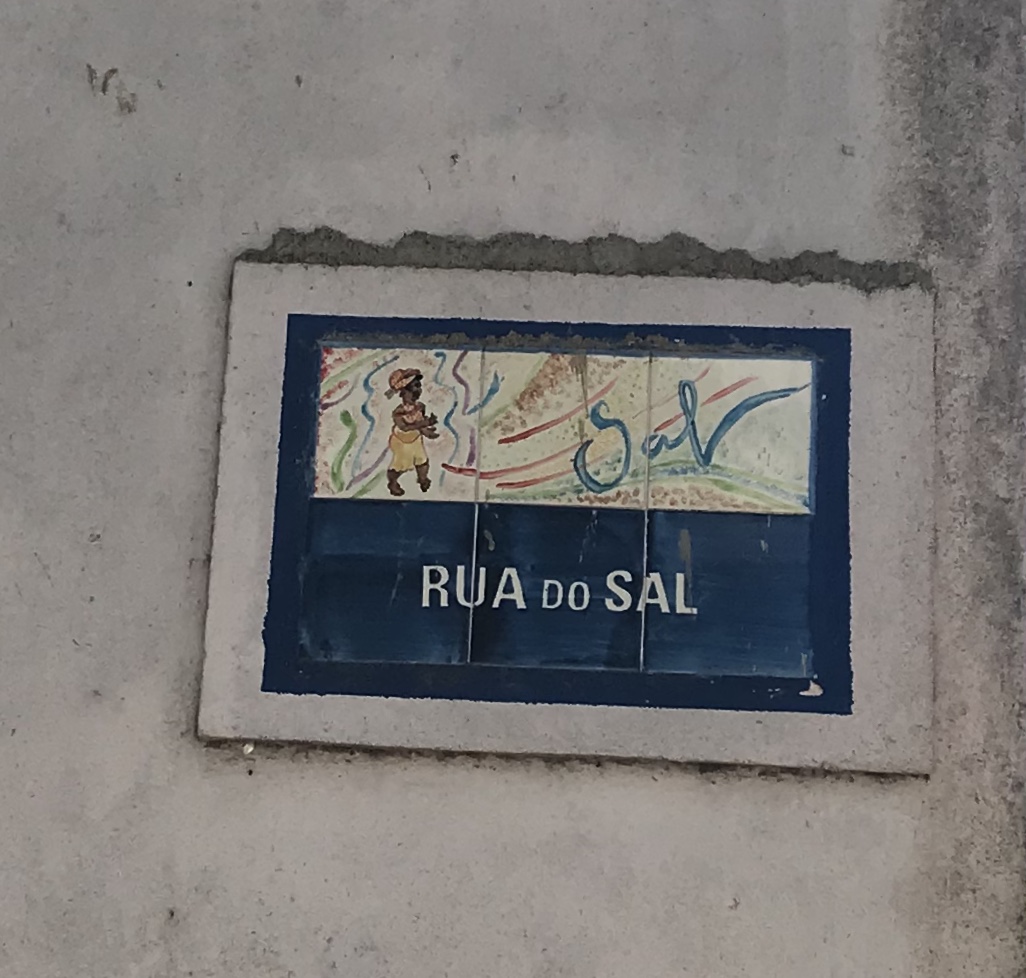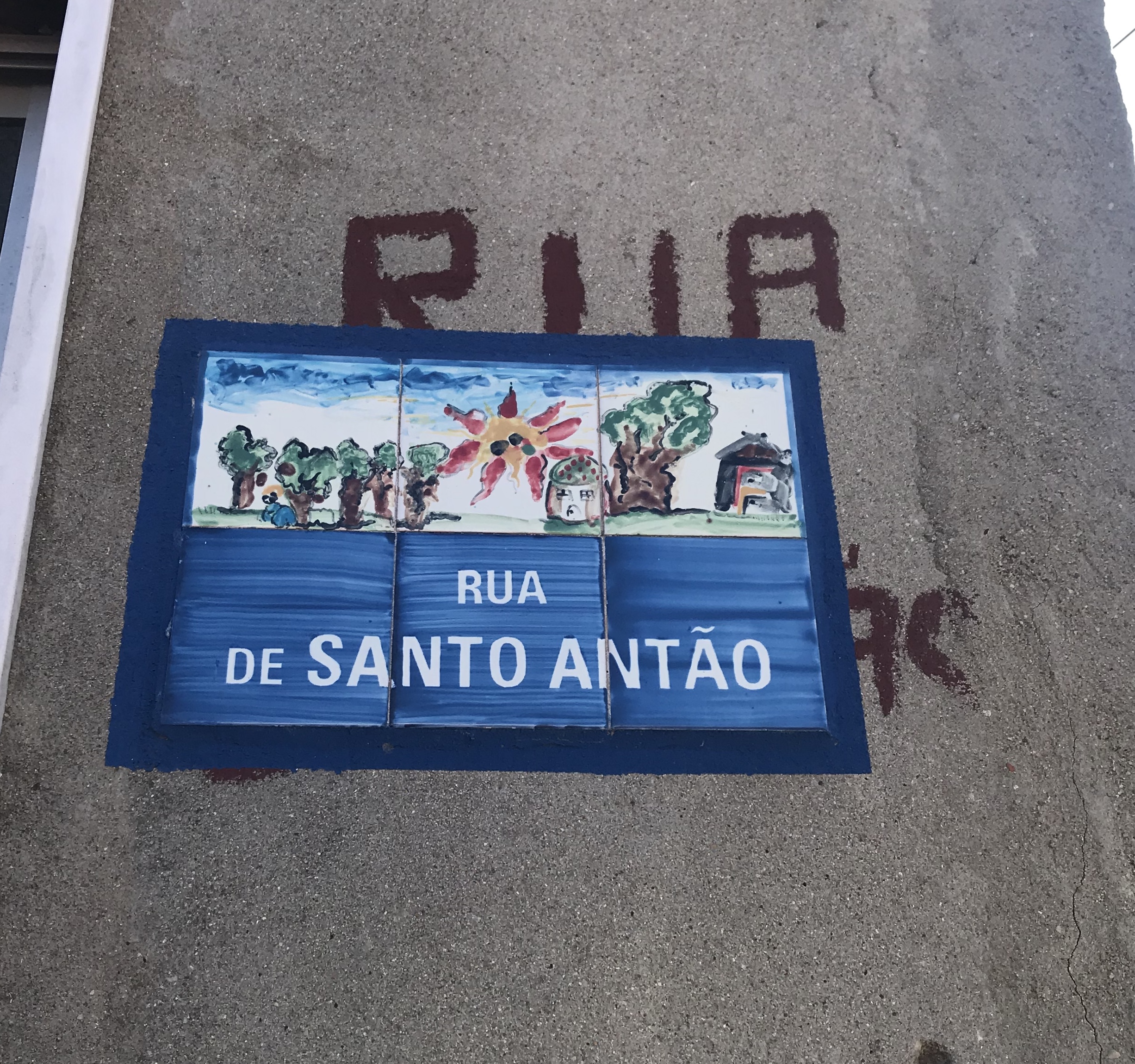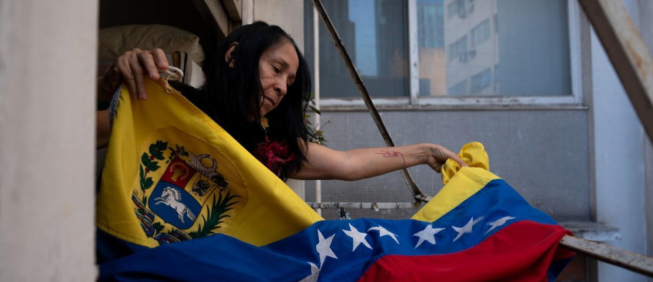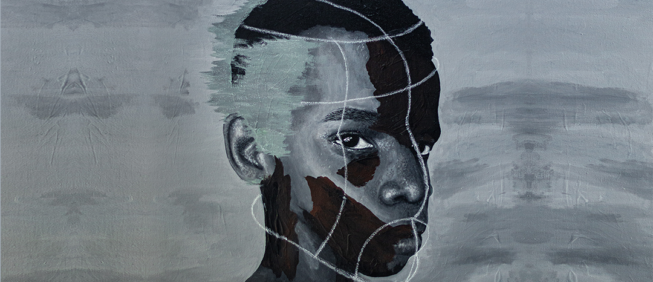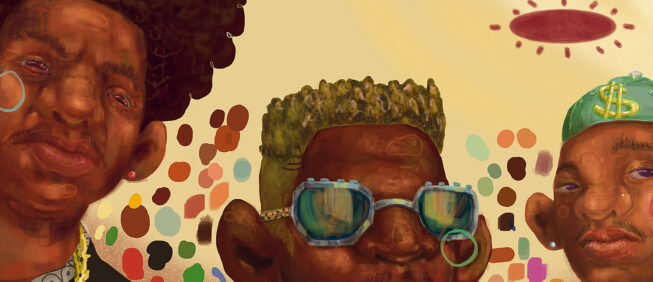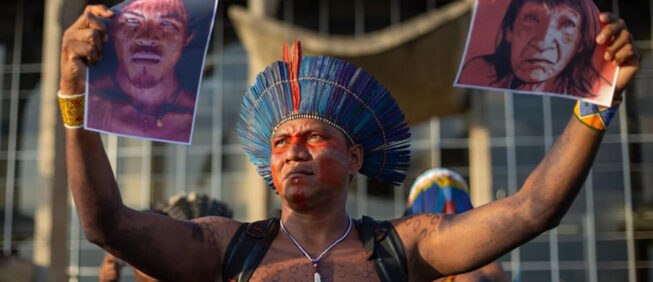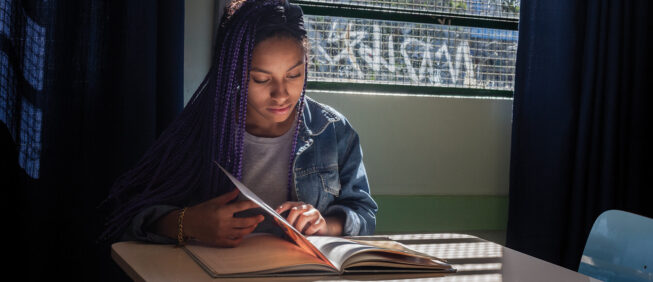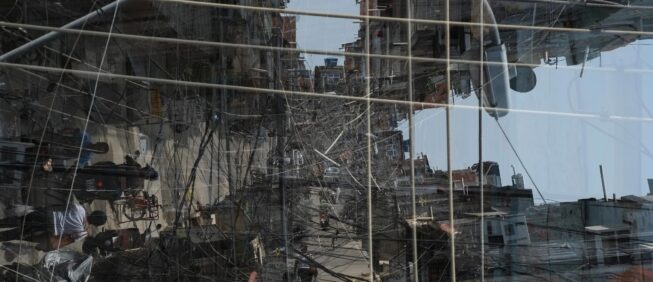Traveling through diverse and creative peripheries in lisbon
The Neighborhoods of Cova da Moura and Talude
Katielle Silva
Marcos Correia
Jorge Malheiro
| Portugal |
23 de July de 2019
translated by Ana Thereza de Andrade Barbosa
The neighborhoods of Cova da Moura and Talude
Clandestine or precarious construction, occupation of private lands, and rehousing in public social housing are common themes used when discussing the neighborhoods of Cova da Moura (Amadora county) and the Military Talude neighborhood (Loures county), in the Lisbon Metropolitan Area (Área Metropolitana de Lisboa - AML). Such representations disregard the complexity of the stories and the struggles of their residents for rights, as well as the emergence of creative initiatives associated with the territorialization process of their residents. These are places of ingenuity and creativity where Portuguese and Creole are mixed in the language spoken in the streets and the Portuguese national identity card, possessed by a large part of the inhabitants, is full of travel stories, belonging to the bearer or their parents, and a cultural baggage that combines an African matrix with the Portuguese context, manifested in sociability, gastronomy, dance or music. They are complex, tense, and inventive hybrid neighborhoods where diversity and adjustment to the new context result in yet unfinished "new cultural elaborations," in a constant process of (de) and (re)construction (Cuche, 2006, pp. 165).
The two neighborhoods share the "informal" adjective, where the process of self-construction was the mastermind that made development possible, and the urban norms were and are limited only by the financial and technical capacities of residents in the practice of mutual-helping (known in the Creole of Guinea-Bissau and Cape Verde as "djunta-mon," which literally means joining hands), strengthening bonds, neighborhood connectivity, and support networks (Delgado, 2013, Gallardo, 2014).
The origin of the "djunta-mon" is linked to the rural world and is based on an important practice of reciprocal solidarity between groups of friends, relatives, and neighbors, which drives the creation and realization of collective projects. Accompanying the migration of populations to the foreign urban world, the "djunta-mon" was adapted in order to respond to the city’s socio-urban challenges, gaining expression in peripheral neighborhoods such as Cova da Moura and Talude Militar, through collective initiatives for clearing land, opening new streets, childcare, and for building houses, among others. The "[...] culture of origin has shown that it still has practical applications for managing everyday problems in new places of residence" (Gallardo, 2014, p.7).
Thus, the idea related to the "packaging" of these neighborhoods is directly associated with what is precarious, unfinished, or unwanted—a kind of "no city." This idea glosses over the complexity and richness of the social and cultural practices that emerge in Lisbon peripheries, instead presenting these neighborhoods’ residents as "those in need."
Certainly there are, however, disadvantageous social and territorial conditions in these places. These neighborhoods feature a population with low levels of education, above-average unemployment rates, and deficiencies in basic sanitation and in the quality of public spaces, creating a "regressive cycle of vulnerabilities" in which those suffering from unequal conditions then reproduce them (Carmo, Cachado and Ferreira, 2015, p.18).
The peripheral neighborhoods of Lisbon are represented as "opaque zones" of the city, the ones that public authorities tend to abandon (except in the case of political campaigns or to promote demolition and rehousing...), marked by stereotypical representations of violence and of deviant behavior or dependence, therefore devaluing their daily work, solidarity and creative processes, within an individual, collective and intercultural resistance in the city. After all, it is impossible to affirm an apodictic relation between informal territories marked by social vulnerabilities and territories with low creativity or innovation (Barbosa, 2012).
The persistence of socio-territorial inequalities in Lisbon’s Metropolitan Area
The Lisbon Metropolitan Area (AML) has undergone profound economic, social, demographic, urban and environmental changes since the 1950s. The population of the municipalities that form AML today increased from 1,249,340 inhabitants in 1950 to 2,821,870 in 2011, corresponding to 15% and 26% of the total Portuguese population, respectively (INE, 2019).
The urban transformation in the AML that occurred between 1950 and 2011 can be summarized in two periods. First, there was a phenomenon of strong industrialization between the 1950s and 1970s that attracted hundreds of thousands of internal migrants. Most of the migrants settled in the south peripheries and, especially, in the north of the city of Lisbon, in areas with less expensive housing (and in many cases informal and precarious).
From the 1970s onwards, with the 1973 crisis and its aftermath, and Portugal's entry into the European Union in 1986, a process of de-industrialization began, and, at the same time, the services sector bloomed. The impacts on the AML territory were profound, especially in areas formerly occupied by industrial activity, such as East Lisbon, the municipality of Vila Franca de Xira (northeast of Lisbon) and, mainly, the South Bank of the Tagus River. In addition, there was a strong infrastructure development in the territory, with an expansion of public transportation network and a significant development of the road network, with a focus on highways. What was formerly the periphery of Lisbon, was progressively integrated into a larger, more fragmented, and dispersed urban network, constantly expanding (Salgueiro, 2002).
It was also beginning in the 1970s, following the Revolution of April 1974 and the subsequent decolonization process in the occupied territories in Africa, that the so-called retornados (Portuguese and descendants from the former African colonies who "returned" to Portugal) settled in the AML, contributing to the demographic growth and urban consolidation of several contiguous neighborhoods of Lisbon. Along with the returnees also came the first significant group of native inhabitants of the former colonies, now known as Portuguese Speaking African Countries (Países Africanos de Língua Oficial Portuguesa - PALOP). Many of these immigrants settled in the counties of Amadora, Sintra, Odivelas and Loures (the first peripheral crown of Lisbon), often in areas initially occupied by Portuguese internal migrants. In the 1970s, most of the areas occupied by these migrants were shantytowns and clandestine neighborhoods (later classified as Urban Areas of Illegal Genesis - Áreas Urbanas de Gênese Ilegal AUGI - susceptible to urban redevelopment) and were characterized, in the first case, by the precariousness of their buildings and by the occupation of space, and, in both cases, by self-construction, the absence of an orderly or qualified public space and lack of basic infrastructure such as sanitation systems.
Despite continued economic, social and urban development in the AML, which involved the relocation and demolition of the majority of the shantytowns, especially between the mid-1990s and 2011 within the Special Rehabilitation Program (Programa Especial de Realojamento - PER) of 1993, and the reconversion and legalization of many clandestine neighborhoods. However, some degraded and informal areas still remain, home to an over-represented portion of residents from the PALOP (immigrants and descendants). Two outstanding examples of this reality are the Cova da Moura neighborhood, in Damaia parish, in the municipality of Amadora and the neighborhood of Talude Militar, in Unhos parish, in the Loures municipality (Figure 1). The neighborhood of the Talude occupies an area of 1.6 km2, is composed of approximately 110 dwellings, with an estimated population of 500 to 700 people, mostly of Cape Verdean origin occupying public and private lands (Ferreira, 2016; Jorge, 2012). The Cova da Moura neighborhood is more densely populated, with an estimated five to six thousand people living in less than 0.2 km2. In practice, the territories occupied by the studied neighborhoods can be considered unique enclaves due to their socio-cultural characteristics in the current AML urban network.
Figure 1 – Bairro da Cova da Moura and Talude Militar Localization

The observation in Table 1 shows the social vulnerability of the Talude neighborhood population. Population percentage with little education (illiterate and primary education) is always higher than in the parish[1]it is a part of and, above all, the county to which it belongs. In relation to the population actually employed, its percentage is always lower than the parish and the county; additionally, between 1991 and 2011, the employed proportion of the population decreased significantly. Furthermore, the unemployment in Talude was, in 1991 and 2001, lower than that of the parish and, in 2001, lower than the municipality itself. However, this reality changed in 2011, when unemployment in Talude was about 30% higher than that of the parish and municipality.
Table 1- Socioeconomic Evolution of Bairro do Talude in 1991, 2001 and 2011 (%)
| Illiterate | Primary | Employed | Unemployed | Youth | ||
| 1991 | (S) Bairro Talude | 15.5 | 29.1 | 45.1 | 3.6 | 35.4 |
| (F) Unhos | 13.9 | 32.7 | 45.8 | 4.1 | 33.2 | |
| (M) Loures | 10.3 | 27.1 | 47.6 | 3.1 | 29.0 | |
| 2001 | (S) Bairro Talude | 17.1 | 34.5 | 46.1 | 2.5 | 27.5 |
| (F) Unhos | 15.6 | 32.4 | 48.0 | 2.7 | 26.8 | |
| (M) Loures | 12.3 | 26.9 | 49.6 | 3.8 | 22.3 | |
| 2011 | (S) Bairro Talude | 6.5 | 30.2 | 38.6 | 8.9 | 25.1 |
| (F) Unhos | 3.3 | 28.2 | 44.6 | 6.7 | 19.8 | |
| (M) Loures | 3.3 | 23.6 | 43.8 | 6.5 | 21.0 |
Source: INE, Censuses 1991, 2001 and 2011.
Regarding the percentage of young people (under 19 years old), this was higher than the parish and the municipality in all years, although a progressive decrease (as in all AML) has been noted in the last decades. In summary, despite the socioeconomic evolution registered in the AML between 1991 and 2011, the Talude neighborhood continues to present more unfavorable socioeconomic indicators when compared to the parish and municipality to which it belongs.
Concerning Cova da Moura (table 2), its socioeconomic evolution seems to be more problematic than that of the Talude neighborhood, despite similar dynamics. The illiteracy rate in Cova da Moura neighborhood in 1991 was more than double that of its parish and municipality. In 2011, despite a sharp decrease compared to 1991, the illiteracy rate was almost three times higher than that of its parish and municipality. On the other hand, the percentage of the population that has completed primary education changes differently, registering well below that of its parish and municipality in 1991, but with very similar levels in 2011.
The employed percentage of the population of Cova da Moura has always been inferior to that of the parish and the county; however, and unlike the Talude neighborhood, comparing 1991 to 2011, the number is practically the same. With regard to unemployment, the percentage of Cova da Moura was slightly lower than that of its municipality in 1991 and 2001; however, in 2011 the situation was different, with a much higher percentage (10.6%) than the county and the parish to which it belongs.
Table 2 - Socioeconomic Evolution of the Cova da Moura neighborhood between 1991 and 2011(%)
| Illiterate | Primary | Employed | Unemployed | Youth | ||
| 1991 | (S) Cova da Moura | 20.4 | 16.9 | 37.7 | 3.4 | 44.5 |
| (F) Damaia | 8.1 | 26.5 | 47.0 | 3.6 | 25.4 | |
| (M) Amadora | 9.6 | 25.2 | 47.5 | 3.5 | 27.8 | |
| 2001 | (S) Cova da Moura | 19.6 | 23.8 | 46.5 | 3.9 | 30.2 |
| (F) Damaia | 9.6 | 27.4 | 47.7 | 3.8 | 17.0 | |
| (M) Amadora | 11.5 | 25.5 | 49.3 | 4.2 | 21.1 | |
| 2011 | (S) Cova da Moura | 8.0 | 25.3 | 35.5 | 10.6 | 26.1 |
| (F) Damaia | 2.9 | 25.7 | 40.6 | 6.6 | 17.8 | |
| (M) Amadora | 3.3 | 23.5 | 42.1 | 7.4 | 20.0 |
Source: INE, Censuses 1991, 2001 and 2011.
Taking this into account, it can be said that the Cova da Moura has a similar picture to the Talude neighborhood, since the census indicators point to an unequal socio-economic situation when compared to the parish and municipality. However, behind this socioeconomic reality that persists in the territories of Talude Militar and Cova da Moura neighborhoods, there are formative and empowering processes, as well as cultural initiatives that reveal a strong creativity and that manifest as real acts of resistance and rebellion against the idea of a monochrome, elitist city. After all, as Hurley (2019) points out, difference and diversity, which facilitate innovation, are today the central characteristic of peripheral territories.
The Talude Militar neighborhood
As its name suggests (literally Military Slope), the neighborhood was built along the Military Road, originally in order to defend Lisbon, and is located in a sloped area of the Trancão River banks, a factor that has led the neighborhood of Talude Militar to be classified by the Municipal Master Plan of Loures[2]as unsuitable for "urban reconversion" because it is an area of landslide risk. This has made resettlement, expropriation, and demolitions a reality for the residents of Talude Militar, spurred by the fact that the neighborhood was targeted by the Special Rehabilitation Program (PER), which aimed to eliminate shanty towns in Portugal. However, it is estimated that the PER covered only 43% of the 150 households originally registered in 1993, rehousing only a portion of the residents (Luiz and Jorge, 2012).
In the peripheral neighborhoods of the AML, we see emerge, in a space of material precariousness (and perhaps constraints on the development of full rights), innovative cultural practices that, though primarily meant to respond to material limitations, also serve as a link to the country and the culture of origin as socio-spatial integration practices of the immigrant population. Within the set of creative practices developed in the neighborhood Talude Militar, we will focus on the urban garden and the neighborhood’s associative organization.
The urban garden is understood as an intervention activity—within a constructed environment, thus coexisting with other spatial typologies, such as residential spaces—meant to meet subsistence needs, but one that also forms a place of identity, freedom, and affection (Luiz and Jorge, 2012). And it is in this context that the urban gardens of the Talude—only possible because of the informality and flexibility of the neighborhood’s occupations—perform several functions besides those directly related to the small organic production destined for resident families tables (with a smaller portion marketed and exchanged inside and outside of the neighborhood).
However, in functioning as a low-cost means of enriching the diets of the inhabitants of Talude Militar, the urban gardens also salvage traditions and tastes of the inhabitants’native countries. Sugarcane, corn, and beans are some examples of the products grown in the Talude's gardens, as well as livestock such as chickens, goats, and sheep.
The cultivated products are the base of typical African dishes such as sweet corn, corn cake, and cachupa [a Cape Verdean stew]. Sugar cane, besides being consumed in its natural form, is also milled and distilled to make ponche and a spirit Cape Verdeans call grogue.
Although it involves residents of different age groups, urban gardening is an activity most intensively developed by elderly people and older adults, many of whom had been connected to the land in their hometowns and were looking to maintain their ways of life in the "new" territory (Lages, 2011). "I was already planting in Cape Verde. As we liked to plant in our land, we also planted here [in the Talude Militar neighborhood],” said a former resident of almost 40 years, now rehoused, in an informal conversation (Figure 4).
Figure 2 - Residents of the Talude Militar neighborhood thrashing peas in front of the vegetable garden, 2019.

The practice of gardening is carried out using knowledge based in tradition, without the use of modern techniques. However, gardeners also put into practice technical knowledge gained through relations between residents and researchers at the University of Coimbra. When the University goes beyond its role in the production, systematization, and transmission of knowledge, it takes on democratic methods that become educational practices, assuming a commitment to society and therefore strengthening resistance movements (Gohn and Zancanella, 2012). These educational practices were implemented in partnership with the University of Coimbra, the product of a project developed by researchers that analyzed the importance of crop rotation, diversification of planted products, natural pest control, irrigation techniques, and the construction of adobe water tanks (Nunes, et al., 2014).
The coexistence of gardens and housing spaces also reflects the struggle for permanence in a territory marked by uncertainty and limited access to basic resources such as water and land.
It is in the search for respect, in subverting the fragility experienced through social, economic, cultural and environmental constraints in a living space not recognized by the public authorities, considered "clandestine" and "informal," that the gardens emerge as a possibility of accessing a space of freedom, lost in another time-space of coloniality that forges the history of this population (Luiz and Jorge, 2012, 151).
The Association for Change and Transcultural Representation (Associação para Mudança e Representação Transcultural - AMRT)[3], formerly called the Association for Improvement and Recreation of Talude (Associação de Melhoramentos e Recreativo do Talude), seems to have emerged from the combination of conquering rights to public services and, at the same time, to feeding immaterial dynamics related to residents’ culture.
The AMRT has been in operation since August 1993 and was created by a group of young neighborhood residents as a response to the difficulties of reaching institutional responses to the insufficiencies of a self-constructed neighborhood, resulting in a process of self-organization aiming to resolve everyday problems and make demands visible to public authorities.
Once basic material needs were met, AMRT has moved into immaterial dimensions through the development of cultural activities and their dissemination or the creation of social spaces that consolidate a common identity. The AMRT has had its own space within the neighborhood since 2000 and carries out projects related to the insertion of the young population into adult and professional life, holding activities aimed at integrating the immigrant population into "Portuguese life" and supporting the education of neighborhood children. It has also developed a labor market insertion center and an information center.
Beyond those activities that take place in the heart of Talude, which are fundamental for the maintenance of a "territorial solidarity," it is important to highlight that the AMRT did not limit itself to its own home court: it has also given value to the participation of Talude Militar neighborhood in decision-making arenas of the municipality of Loures, such as the Town Hall and the Unhos Parish Council (Lages, 2011).
The AMRT also gained strength by offering social support to Talude Militar residents, both with a daycare center (fundamental in a majority youth neighborhood), and the creation of the Food and Clothing Support Bank - Banco de Apoio Alimentar e Vestuário (Lages, 2011) in 2008.
In addition to social support, there also exist those festivities that reinforce the permanence of a culture that may not be considered "from there [other territories]," but which is also not only "from here," and that both help to strengthen solidarity and open the neighborhood to the outside. The Feast of the Sacred Heart of Jesus, which takes place in September and aims to reunite the neighborhood’s resident and ex-resident African-origin population(as well as those who have never lived there), is an example of this type of festival. These events typically incorporate the sound of the batuque[drum], mornac or funaná, and have revelers eating cachupa and drinking grogue made from cane from the local vegetable garden.
The Cova da Moura neighborhood (Kova M)
From the Trancão River now we climb up the hill between the parishes of Damaia and Buraca, in the county of Amadora. Sharing elements from the same historical-cultural context as the Talude Militar neighborhood, the African population, mostly from Cape Verde, settled almost half a century ago in the territory of the Alto da Cova da Moura neighborhood. Along with these Cape Verdeans were many white returnees from the former Portuguese colonies, joined by other populations of the PALOPs such as those from São Tomé and the Angolans. However, both at the AML level and nationally, the Cova da Moura neighborhood is known as a"stronghold" of African identity, culture, resistance, and creativity, particularly for Cape Verdean Creole.
The Cova da Moura neighborhood is characterized by the young age of its population, with employment featuring over-representation in construction jobs (men) and cleaning services, kitchens jobs, and service in restaurants (women) (Vasconcelos, 2007). Narrow streets with crumbling tar, visible and criss-crossed electrical installations, a dense urban layout that constricts public space, and several buildings that defy canonical architecture are all part of the landscape in this neighborhood just a stone’s throw away from Lisbon. (Figures 3 and 4).
The neighborhood’s shape resulted from an almost organic evolution process, which begins with an originally self-defined partial layout that is becoming denser and being gradually filled by resident expansion. It is an occupation of an almost totally private piece of land, where public action has proved incapable of promoting upgrading or even effective regulation. Evidence of public intervention is limited, corresponding essentially to the paving of a few streets, to the construction of a school, and a community sports center.
In the absence of effective intervention from public actors, local neighborhood organizations have taken on responsibility for guaranteeing residents’quality of life and maintaining demands with external public actors, assuming a leadership role in the collective resistance.
As well as the Association of Transcultural Change and Representation (AMRT) in the Talude Militar neighborhood, the Cultural Association of the Youth (Associação Cultural Moinho da Juventude - ACMJ) emerged from the urgent need to respond to the basic daily demands for the neighborhood, such as access to water and electricity. The ACMJ has also attached itself to the Association of Residents of Bairro Alto Cova da Moura (Associação de Moradores do Bairro Alto Cova da Moura - AMBACM).
Although the ACMJ and the AMRT share an origin based on the lack of formal responses to neighborhood problems, the ACMJ has maintained, from its inception, a strong discourse, converted into practice, of valuing the immaterial (skills development, cultural promotion, sport promotion...), that incorporates a relevant element of Cape Verdean culture appreciation, often rebuilt in the context of interaction and diversity.
Indeed, in the practice of the ACMJ, material and immaterial dimensions intersect through art, here understood as a political and social dimension contributing to the deconstruction of the common sense, seeking to give visibility to that which hegemonic discourse seeks to conceal (Carmo, 2012; Mouffe, 2007; Malheiros, 2007). Graffitis one of these artistic initiatives, promoted and present in the Cova da Moura neighborhood, that demonstrates an appreciation for the culture and the existence of an African transnational identity (Campos and Vaz, 2013). Much of the graffiti contains demands and messages of hope. Others feature militants and black idols, painted in shades of grey or with vibrant colors that carry mainly black or Creole identity elements, serving on one hand to beautify Cova da Moura, and on the other as a marker of identity, resistance, and affirmation, highlighting values such as solidarity, collective action, anti-racism, and resistance to oppression.
Figure 5 - Graffiti in the Cova da Moura neighborhood, 2019.

More specifically, the remembrance of the place of origin is present in the toponymical signs hung by residents, in an action of the ACMJ, giving Cabo Verde island names to neighborhood streets.
Figure 6 - Street Plaques in the Cova da Moura Neighborhood, 2019
The experience of the culture of origin also appears in the sound and dance of the batuque performed by women, Cape Verdeans or descendants, members of the Finka-Pé Batuque Group, created with the support of the ACMJ in 1988. A dancer stands in the middle, as women in the surrounding circle percuss the "tchabeta, ”a cloth or object covered with a napkin wrapped between the legs, and accompany her dance with songs that refer to, for example, the difficulty of being a woman and the daily problems in Portugal.
Cova da Moura’s best known original cultural event lies in the festivities of Kola San Jon. This procession, which originates from the islands of Santo Antão, São Vicente, and São Nicolau in Cape Verde and that crosses slave and colonizer culture, mixes music, drums, whistles and artifacts, and has been celebrated in the Cova da Moura neighborhood since 1992. Twenty-one years since beginning the celebration, the feast of Kola San Jon, celebrated at the end of June, near St. John's Day, was entered into the National Inventory of the Intangible Cultural Heritage of Portugal.[4]
In the field of cultural promotion and production marked by hybridity and the initiative of young people, it is essential to mention the Kova M Festival, which has been held annually since 2012 in Cova da Moura. As stated by the Festival Coordinator, this one aims to give visibility to young musicians and dancers living in Cova da Moura and in other peripheries.[5]It is through the Kova M Festival that the population of the neighborhood and surrounding counties can enjoy, for a few days, music, dance, sport, African flavors, and spices, as well as workshops on critical issues.
Among the musical genres presented at the Kova M Festival, national hip-hop, or portuga rap, stands out. In this music with an ethnic Afro element, neighborhood youths express their indignation through their lyrics, as well as their dreams of a changing reality (Raposo, 2010). Since 2008, these youngsters have been using Kova M Studio, owned by ACMJ, to develop their work and explore new creative practices and broadcast on digital circuits, recording high numbers of streams.
For example, in 2010, an album called "intervention music," Kova M. Studio's first, was released, bringing together several rap musicians from the neighborhood. To talk about rap at Cova da Moura is to hear names like Dom Vá, Ridel, Kromo di Guetto and Mynda Guevara. The hip-hop of Cova da Moura, sung in Portuguese and Creole, portrays the reality of that neighborhood, which seems to mix with the realities of the peripheries of the great global cities, the product of an urbanization that discriminates, marginalizes and excludes, shaping unequal and unjust cities.
In addition to these cultural practices, Cova da Moura neighborhood shows off its unique cultural offerings in restaurants with typical island dishes, with aromas that fill the streets, and in the salons of Afro hairdressers, and in the women who sell the fish and the vegetables that tropical cuisine requires.
These initiatives of (i)material innovation and creativity in the Cova da Moura neighborhood mean, in effect, the "production of the city," as residents transform a precarious space into a place of life. Internally, they contribute to the strengthening of identity and sense of community, supported by cultural codes and practices that are lived by and respected by the population. Externally, they contribute to the mobilization and diffusion of resistance strategies—led by residents and local associations such as the ACMJ and AMBACM— to the successive attacks of partial or total destruction of the neighborhood, as mentioned in the context of the PER or a separate document prepared by the municipality in the middle of the first decade of the 21st century.
Final Considerations
Compared to formal public resettlement neighborhoods, which, despite the better quality of their buildings are often not well integrated into the urban fabric and are often marked by the absence of local economic activities (formal and informal), self-built neighborhoods such as Talude Militar and, especially, Cova da Moura, manifest the right of the impoverished and ethnically peripheral population to choose their place in the city and to contribute to the production of this city, adjusting it to their desires and needs. Because they are places marked by a certain abandonment of public regulation, by conflicts of different types (for example, between owners and residents, police forces and young people, local institutions and public authorities) and by a requirement of constant adaptation, these are not socially easy neighborhoods, and are instead characterized by the resilience and resistance of their residents, as in the case of Cova da Moura.
It is in neighborhoods like these that a diverse and plural city is produced, one that challenges common normative references that tell us (incorrectly) that integration (of immigrants at the place of destination) is incompatible with an active transnationalism or that criminality dominates the peripheral neighborhoods, and that these areas must be eradicated. Talude Militar and Cova da Moura show us otherwise.
Because the formal city restricts access to those with limited resources, such as labor migrants of the PALOP and their descendants, popular neighborhoods are the life alternative for those who "stay outside" and where they reinvent themselves daily. Generated within a framework of constraints (few financial resources, absence of components of public planning in the territory...), the challenges are many, from the quality of the houses to the near absence of public spaces, to the reproduction of poverty and school failures in a framework of racism and territorial stigma. Therefore it is necessary to make the state present in these places, not to destroy them, but to rehabilitate them, creating, in co-management with residents, better physical spaces, opportunities for training and valuing alternative "endogenous" resources (reconstructed creole-ness) that lead to new representations about the neighborhoods, integrating them into the metropolis. Only then will it be possible to take full advantage of the creativity existing in these places, materializing the desire for social innovation, as a new and mobilizing process, capable of modifying power relations.
This work counts with the financial support of Fundação para a Ciência e Tecnologia (FCT/MEC), nationally funded. It co-financed by FEDER – Programa Operacional Competitividade e Inovação – COMPETE 2020 – PTDC/ATP-GEO/2362/2014 – POCI-01-0145-FEDER-016869 / FI
Original in Portuguese
References:
Barbosa, J. L. Cidade e Território: desafios da reinvenção da política do espaço público. IN: SILVA, Jailson de Souza e BARBOSA, Jorge Luiz; FAUSTINI, Marcus Vinícius. O Novo Carioca. Rio de Janeiro: Mórula Editorial, 2012, pp.69-73.
Campos, R., Simões, J. Participação e inclusão digital nas margens: uma abordagem exploratória das práticas de culturais de jovens afro-descendentes. O caso do rap negro. Media & Jornalismo, n. 19, p. 117-133, 2011
Carmo, A. Cidadania em espaços (sub)urbanos: o Teatro do Oprimido no Alto da Cova da Moura e no Vale da Amoreira. Sociedade e Estado – Volume 33, Número 2, Maio/Agosto 2018.
Carmo, R. M., Cachado, R., Ferreira, D. Desigualdades em tempos de crise: Vulnerabilidade habitacionais e socioeconómicas na Área Metropolitana de Lisboa. Revista Portuguesa de Estudos Regionais, n. 40, 2015.
Cuche, D. A noção de cultura nas Ciências Sociais, 3ª Edição, Lisboa: Fim de Século – Edições, 2006.
Delgado, S. B. Vários percursos diversas identificações. Descendentes de migrantes cabo-verdianos no bairro do Talude-Unhos. Lisboa: Alto-Comissariado para as Migrações-I.P, 2013.
Ferreira, I. C. G. Requalificação de espaços suburbanos de exclusão e a sua integração na cidade. -O bairro do Talude em Loures. Dissertação de Mestrado apresentada na Faculdade de Arquitetura da Universidade de Lisboa, 2016.
Gallardo, F. J. C. Djunta-mon: migración caboverdiana y prácticas de
ayuda mutua en la periferia de Lisboa. Perifèria, n. 19, v. 2, Dez, 2014. pp 4-28.
Gonh, M. G., Zancanella, Y. A relação entre Universidade e Movimentos Sociais como princípio da construção crítica da educação do campo. Olhar de Professor, Ponta Grossa, v. 15, n. 1, pp. 57-70, 2012.
INE (2019) Instituto Nacional de Estatística. (URL: https://www.ine.pt)
Hurley, A. K. (2019), Radical Suburbs. Cleveland, Belt Publishing.
Lages, J. P. À espera no bairro do Talude Militar – Reflexões sobre o direito à cidade. Dissertação de Mestrado apresentada na Faculdade de Arquitetura da Universidade de Lisboa, 2011.
Luiz, J. T., Jorge, S. Hortas Urbanas Cultivadas por Populações Caboverdianas na Área Metropolitana de Lisboa: entre a produção de alimentos e as sociabilidades no espaço urbano não legal. Miradas en Movimiento, Special vol jan. 2012, pp. 142-158.
Malheiros, J. Revalorisation de la culture, créativité et nouvelles opportunités pour les descendants des immigrés: la Cova da Moura et le monde » in Sud-Ouest Européen – Revue Géographique des Pyrénées et du Sud-Ouest, nº24, 2007, pp. 87-99.
Mouffe, C. Artistic activism and agonistc spaces. Art & Research – A Journal
of Ideas, Contexts and Methods, v. 1, n. 2, p. 1-5, 2007
Nunes, J. A., Covas, D. N., Santos, J. B., Castro, I. Novos envolvimentos da Ciência com a Sociedade: As Oficinas de Ciência na intersecção das Ciências da Vida, as Ciências Sociais e os seus Públicos. Relatório final do projeto de investigação PTDC/CS-ECS/108011/2008 - FCOMP-01-0124-FEDER-009237. Centro de Estudos Sociais da Universidade de Coimbra, 2014.
Raposo, O. Tu és rapper, representa Arrentela, és red eyes gang: sociabilidades e estilos de vida de jovens do subúrbio de Lisboa. Sociologia - Problemas e Práticas, n. 64, p. 127-147, 2010.
Salgueiro, T. ‘Desenvolvimento Urbano de Lisboa’, Revista de Estudos Regionais, 5, pp.7–22, 2002.
Vasconcelos, L. Cova da Moura: uma experiência de intervenção sócio-territorial partcipada. Inforgeo, n. 20/21, p. 107-113, 2007

Katielle Silva | Brazil |
Katielle Silva is a geographer and holds a Masters Degree in Environmental Development, both from the Federal University of Pernambuco. Silva is currently pursuing a PhD in Human Geography from the Institute of Geography and Spatial Planning at the University of Lisbon. She is a researcher at the following research centers: ZOE (Urban and Regional Policies and Dynamics), the Center for Geographic Studies (CEG-University of Lisbon), and MSEU (Social Movements and Urban Space) at the Federal University of Pernambuco.
katiellesusane@gmail.com
Marcos Correia | Portugal |
Marcos Correia is a geographer and holds a Masters Degree in Geographic Information Systems and Spatial Planning, both from the University of Porto School of Letters. He also holds a PhD in Transportation Systems from the Superior Technical Institute of the University of Lisbon. Correia conducts research in the areas of transportation, urbanism, accessibility, equity, social inequality, modeling, and econometrics.
marcoscorreia@edu.ulisboa.pt
